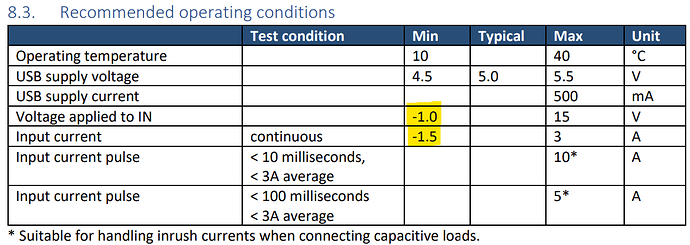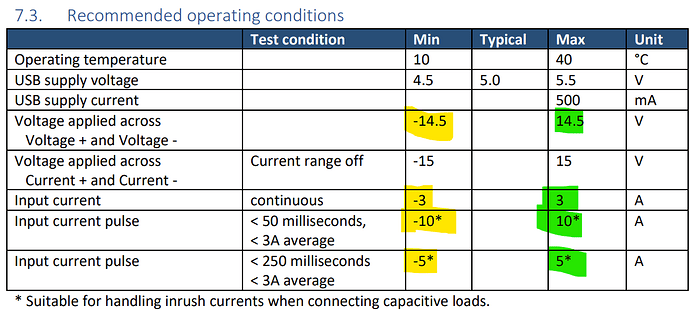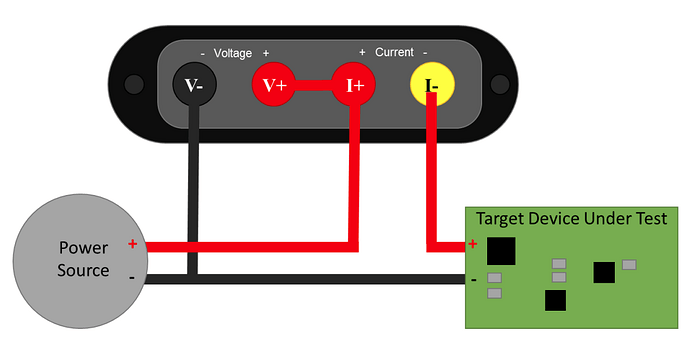I have negative voltage rail of -2v input . will js110 will measure the power for -2v?
i have connected external power supply of -2v to IN of JS110 and OUT of JS110 is connected to DUT. while in GUI oscilloscope measurement I see -1.5V instead of -2v. I measured the voltage at joulscope IN/OUT terminals its exact -2v, but why its showing -1.5v in GUI?
Hi @pushpa and welcome to the Joulescope forum. The first-generation Joulescope JS110 has always been a (mostly) 1-quadrant instrument measuring +current and +voltage. Here are the specs from the Joulescope JS110 User’s Guide:
While the measurement range does extend slightly negative, it is definitely not symmetric. Also, the JS110 only contains fast autoranging in the +current direction. While negative saturation varies slightly from instrument to instrument, -1.5 V is pretty typical.
The second-generation Joulescope JS220 is a full symmetric, 4-quadrant instrument with fast autoranging for both +current and -current. From the Joulescope JS220 User’s Guide:
If you need fully symmetric measurements, please consider upgrading to the JS220!
Hi,
Thank you for your response. Can you also please clarify below.
- So can I also give -4V as input using js220?
- will same GUI work for js220 as well?
- Can you give connection diagram to drive input to joulscope from external supply(vary the voltage) and connecting its output to DUT. I want to measure voltage,current and power all 3.
- Can you also confirm if JS220 v+v- and I+I- is same as JS110 in+in- and out+out- ?
Regards,
Pushpa
Hi @pushpa
Yes. Anything from -14.5 V to + 14.5 V.
Yes, the Joulescope UI and Joulescope Python packages support all Joulescopes (JS110 and JS220 as of 2025-09)
From the Joulescope JS220 User’s Guide, currently revision 1.10 on page 22:
The JS110 shorts together V+ and I+ on the instrument:
The JS220 allows you to wire voltage and current separately, which means you can make 4-wire Kelvin connections. Look at the start of section 9 on page 18 for more details.



